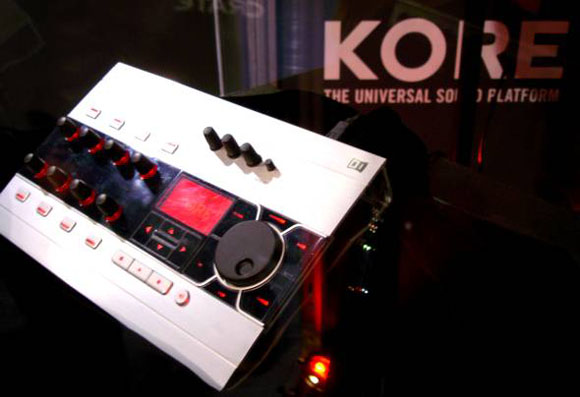Native Instruments’ bold claims that KORE is “the worldÃÅ’s first Universal Sound Platform” continue to earn skepticism from some parties online. But even with over a month to go before KORE’s release, there are some indications of how KORE might evolve. Here’s CDM’s current outlook on the situation:

KORE, patch librarian: A lot of people have focused on KORE’s role as a way of easily finding preset sounds. But by “universal,” Native isn’t necessarily claiming that every third-party soft synth developer is going to do what NI did and painstakingly come up with keywords for every single preset. For an example of one developer who won’t, check out a thread on KVR by star Mac plug-in developer Urs Heckmann. (Thanks to velocipede, in comments!) Urs rightfully points out why most developers simply won’t bother, since KORE is really NI’s creature, and NI already has a leg up with their own sounds. He also has some excellent points about why finding keywords for sounds is problematic, though that’s an issue with any catalog of anything. I still think having a catalog is better than having none.
So, will you see any sounds cataloged in KORE other than Native’s? I think so: remember, a lot of sampled soundware is distributed in formats based on Native’s sampler, Kontakt. Watch for big sample houses like East/West to start releasing KORE data for their sounds. Anyway, that’s the kind of content you’ll really need this for.
Other meanings of “universal”: I don’t think finding sounds is the only major feature of KORE. The key is the KORE hardware, which will let you switch sounds, navigate sounds and presets, and control plug-in parameters with high-resolution data. None of this has been easy to do without grabbing your computer mouse. Some of KORE’s other features aren’t so new, like setting up splits and layers and hosting plug-ins. But even there, other hosts don’t necessarily run as plug-ins; they either require standalone operation or at best run as ReWire. Ironically, a lot of the criticisms I’ve heard of KORE come from people who don’t want the preset librarian features. KORE certainly promises to do more than that, and while preset management is important, those other features will be at the top of my list when I finally get to test it myself.
Enter the user communities: It’s funny, everyone is assuming KORE will be snapped up by soft synth newcomers to make it easier to find the right organ preset. I think it’s far more likely that KORE will appeal to soft synth mavens, at least initially. Already, I’m hearing rumblings from would-be KORE users that they’re planning to immediately start programming KORE for their favorite soft synth. So, I think one of the first things we’ll see when KORE ships is pre-programmed libraries coming from users. Which brings me to my next point:
Reaktor KORE: For anyone who doubts a “niche” product at a reasonably high price point can attract a cult following, look no further than Reaktor. The Reaktor user community is nothing short of incredible: hit Native’s site, and you’ll find hundreds of user-built synths and a heavily-used forum. Reaktor users are some of the most passionate I’ve seen anywhere, and they’re proud of the content they create.
I think the Reaktor crowd could be the first to heavily adopt KORE. One major feature missing in Reaktor, in fact, is the ability to easily combine lots of home-built instruments and effects. Reaktor ensembles sort of do this, but in a really inflexible way. And while Reaktor has a plug-in, it’s dependent on your host, and navigating patches you’ve created can be tricky. I’m more excited about combining Reaktor and KORE than I am about NI’s other products, to be honest.
The competition: What’s nice about KORE is that it runs all your plug-ins, inside any host or in a standalone mode, and lets you easily move around files created in it. That makes it basically peerless. But many users are loyal to one given host, meaning KORE has plenty of competition. We’ve seen that already in feedback. NI might not think of Logic’s Environment, or Reason’s Combinator and Refill format, or Novation’s Remote SL keyboard, or lightweight hosts like Energy-XT on Windows, as competition. But to users, they are, because the major killer feature for many users remains playability and control, not necessarily preset management.
Want to weigh in?
Now, I’d really like to hear from you, whether you’re a developer or a user. What questions do you have about KORE? What would you like to see tested? What’s your personal take on it, and what are you planning to use?
The heated debate around this product suggests to me that it is raising some questions worth discussing, and might really be a new product category, particularly as soft synths start to reach maturity and computers onstage become more commonplace. I can’t wait to hear what you think . . . and I can’t wait to get my KORE, hopefully next month.
Previously:
Messe: KORE Pricing, Availability Official — US$579, May 8
NAMM: Why KORE Could Change How You Play Software Instruments